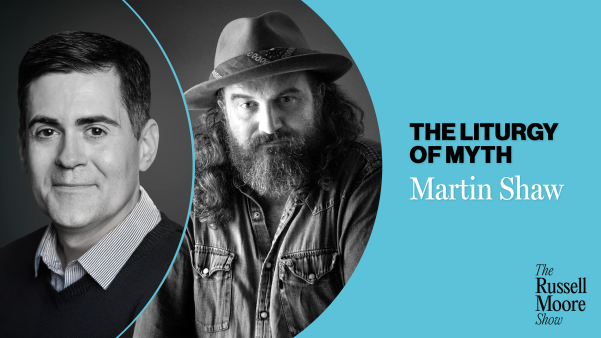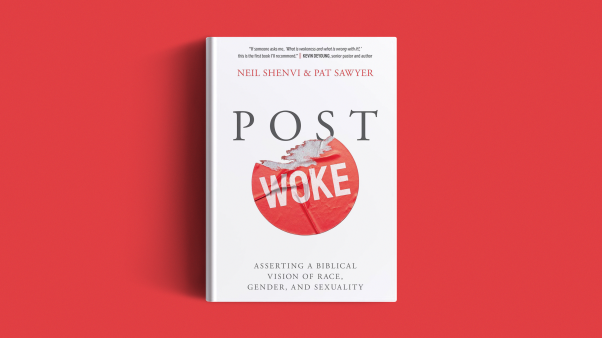When Stanton Jones first began to study psychology, homosexuality was a malady, listed and described in the official “diagnostic Bible,” the Diagnostic and Statistical Manual of Mental Disorders. In 1973, that diagnosis was dropped. Now the American Psychological Association’s official website states, “The reality is that homosexuality is not an illness. It does not require treatment and is not changeable.” The website warns that “conversion therapy” is poorly documented and could cause potential harm. The American Psychiatric Association’s website adds, “[T]here is no published scientific evidence supporting the efficacy of ‘reparative therapy’ as a treatment to change one’s sexual orientation. The potential risks of ‘reparative therapy’ are great, including depression, anxiety, and self-destructive behavior.”
What to make, then, of the apparently sincere personal testimonies of people claiming to be ex-gay? Longtime Wheaton College professor of psychology and provost Jones, working with Regent University professor Mark Yarhouse, found an anomalous situation. Professional opinion made unusually absolute statements of the impossibility of change, considering older studies of homosexuals under treatment that showed substantial evidence of change. Critics of the older research noted shortcomings but offered no better evidence in support of the contention that change is impossible, even dangerous.
Jones and Yarhouse address this lack of good evidence in their book, Ex-Gays?: A Continuing Study of Religiously Mediated Sexual Orientation Change in Exodus Participants. By taking a sample of people entering ex-gay programs under the Exodus umbrella and following them with detailed questionnaires over several years, Jones and Yarhouse tested the impact of ex-gay programs on participants—whether they actually experienced change, and whether the attempt to change caused additional distress. Participants are still being followed, but the findings to date clearly upset the professional consensus. A substantial minority of participants showed significant change from homosexual patterns of behavior and thought, and there was no overall evidence of additional mental distress. The change observed was generally modest, perhaps comparable to the results of therapy for alcohol and drug addiction, for troubled marriages, or for personality disorders.
Jones and Yarhouse emphasize the imperfections of their research, carefully noting points at which their method could be criticized. For example, they had hoped for 300 or more participants, but found many Exodus ministries mysteriously uncooperative. In the end, they settled for 98 people in their initial sample. (To boost the sample size, Jones and Yarhouse added a less-than-ideal cohort who had already been involved in the program for one to three years.) They also chose not to use physiological measures of sexual attraction, primarily because Exodus ministries would have found the use of pornography in research ethically abhorrent. Though humble in their presentation, Jones and Yarhouse conclude that their research is the most rigorous ever conducted on this subject.
Clear Changes
Nearly half of Ex-Gays? covers background information explaining the current controversy over ex-gay ministries. Jones and Yarhouse offer a careful survey of published research on homosexual change. They devote a chapter to explaining the religious views of Christians who seek help from Exodus, questioning whether psychological professionals are adequately trained to consider their concerns. They give a brief history of how homosexuality and its treatment have been viewed among psychologists and psychiatrists. Jones and Yarhouse explain at length how researchers have struggled to define boundaries between homosexuality and heterosexuality, and to define how change can be measured. These chapters are useful to anyone seeking a balanced understanding of the subject.
Naturally, research results will attract the most attention from readers. As Jones and Yarhouse themselves note, both skeptics and true believers will find evidence for their arguments. One reason is that, rather than choosing just one measurement tool for change, Jones and Yarhouse administered questionnaires for all the measurement tools currently used for sexual identity and attraction. Each of the six tools has a slightly different focus, and each tool yields slightly different results. They also reported results for three different populations: the whole group of 98 (whittled down by dropouts to 73), the “Phase 1” subpopulation (57 of the 98) who had been in the program less than a year when research began, and another subpopulation (55 of 98) they call “truly gay” because their prior behavior and inclination were distinctively one-sided.
When subjects were asked to describe whether they thought of themselves as homosexual, heterosexual, or bisexual, they showed clear changes after being involved in Exodus programs. Notably, the greatest average changes were found in the “truly gay” subpopulation—a surprising find considering the frequent accusation that ex-gay ministries mostly affect bisexuals who call themselves gay but have always had definite heterosexual feelings.
Jones and Yarhouse also conducted qualitative analysis, breaking subjects into six categories of response, ranging from “Success: Conversion” to “Failure: Gay Identity.” They found that 38 percent could be described as “Success: Conversion” or “Success: Chastity,” with another 29 percent continuing hopefully, even though they could not yet demonstrate convincing change. They compare this “success rate” to results shown in a recent, reputable study of drug therapy for depression.
As to the purported harmfulness of ex-gay ministry, they found no evidence to support this claim. Psychological distress actually diminished slightly, though the changes were too small to be statistically significant. Jones and Yarhouse found, contrary to professional consensus, that change is possible. But they did not find that change is possible for everyone. They write, “The fact that some human beings can break the four-minute-mile barrier establishes that running a four-minute mile is not impossible, but that same fact does not establish that anyone (every human being) can break the four-minute-mile barrier.”
Change was complex. “Most of the individuals who reported that they were heterosexual at Time 3 did not report themselves to be without experience of homosexual arousal, and did not report heterosexual orientation to be unequivocal and uncomplicated. Sexual orientation for the individuals in this study (and indeed for most of us) may be considerably more complicated than commonly conceived, involving a complex interplay of what we are instinctively attracted to, what we can be attracted to with proper attention and focus, what we choose to be attracted to based on how we structure our interpersonal environments, our emotional attachments, our broader psychological functioning, (of course) our religious and moral beliefs and values, and many more factors. We believe the individuals who presented themselves as heterosexual success stories at Time 3 are heterosexual in some meaningful but complicated sense of the term.”
Will the Jones-Yarhouse study dramatically change the way the ex-gay movement is regarded? That seems unlikely, given the firm ideological commitments of opponents and the limited changes observed. But Jones and Yarhouse have a more modest goal: respect for “the autonomy of individuals who, because of their personal values, religious or not, desire to seek change of their sexual orientation as well as those who desire to affirm and consolidate their sexual orientation.” Without evidence of harm, and with substantial evidence that some can find help on the basis of their religious values, on what professional or scientific basis can they be discouraged from seeking such help?
Tim Stafford is a CT senior writer.
Copyright © 2007 Christianity Today. Click for reprint information.
Related Elsewhere:
Ex-Gays?: A Longitudinal Study of Religiously Mediated Change in Sexual Orientation is available from ChristianBook.com and other retailers.
InterVarsity Press held a press conference on the book today in Nashville.
This article appears as a sidebar to “An Older, Wiser Ex-Gay Movement” in our October issue.
Previous articles on ex-gays and reversing homosexuality are available in our special section.
Mark Yarhouse is professor of psychology and director of the Institute for the Study of Sexual Identity (www.sexualidentityinstitute.org) at Regent University
Stanton Jones‘s articles and reviews for Christianity Today include:
Homosexual Healing | Review of Coming Out Of Homosexuality (August 15, 1994)
The Incredibly Shrinking Gay Gene | By Stanton L. Jones, provost at Wheaton College, and Mark A. Yarhouse, assistant professor of psychology at Regent University. (October 4, 1999)
The National Association for Research & Therapy of Homosexuality published an interview with the authors about their previous work.
PATH (Positive Alternatives to Homosexuality) lists studies on reparative therapy and links to organizations, such as Exodus International, that work with people who have unwanted same-sex attractions.
ChristianBibleStudies.com has a Bible study on “Homosexuality and Gods Household.”










